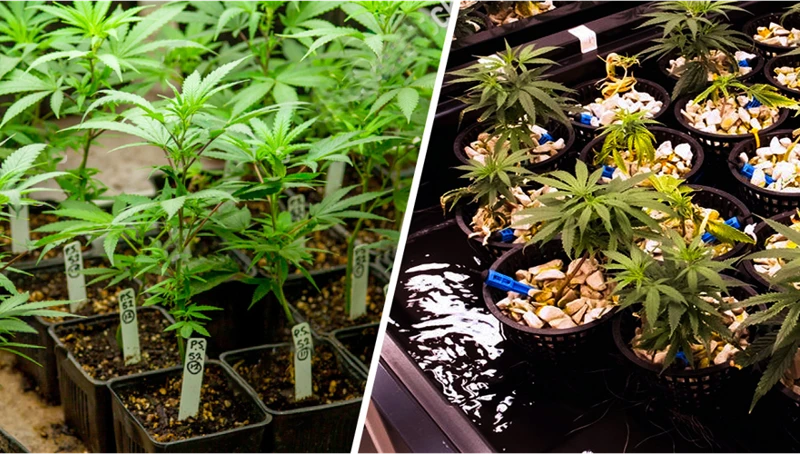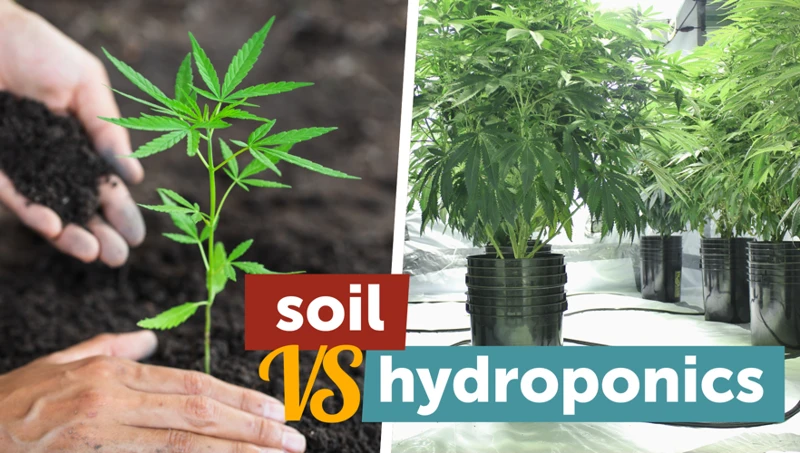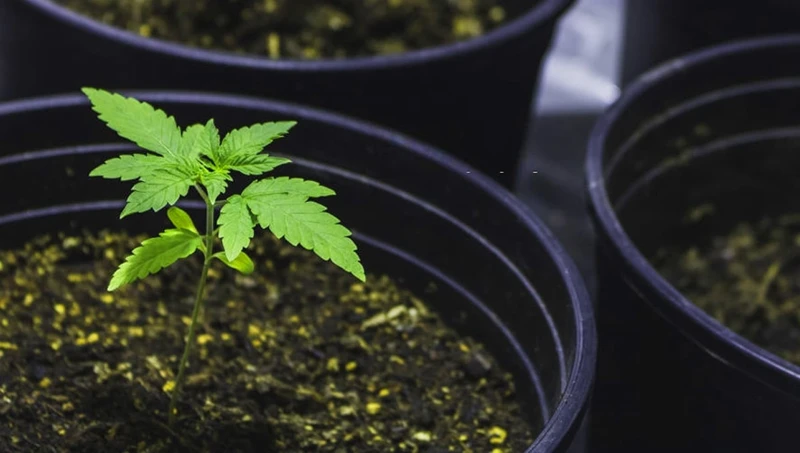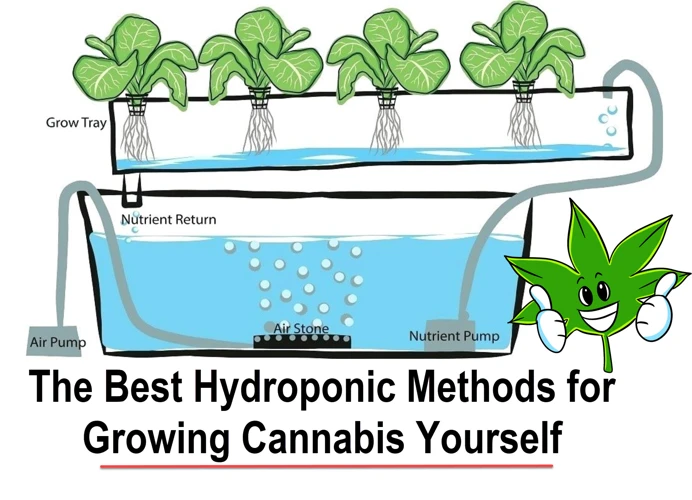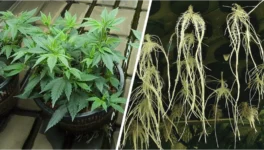
The Cost Comparison of Hydroponic and Soil Cannabis Growing
When it comes to growing cannabis, there are a variety of methods available – but two of the most common are hydroponic and soil growing. Both methods have their pros and cons, and deciding which one to use can be a challenging decision. One critical factor you’ll need to consider is the cost. While hydroponic growing requires a more substantial upfront investment, it can ultimately be more cost-effective than soil growing over time. In this article, we’ll explore the costs associated with each method, from equipment and electricity to nutrients and water, helping to give you a better understanding of which option is right for your needs and budget.
Pros and Cons
Contents
When it comes to choosing a method of growing cannabis, there are two main options to consider: hydroponic growing and soil growing. Each method has its own set of advantages and disadvantages, and it’s important to weigh these carefully before deciding which one is right for you. Let’s take a closer look at the pros and cons of each method to help you make an informed decision. If you want to learn more about hydroponic growing, you can check out our introduction to hydroponics for cannabis.
Hydroponic Growing
Hydroponic growing is a method of cultivating plants without soil, using a nutrient-rich water solution. This method has gained popularity in recent years due to its potential to produce higher yields and faster growth rates compared to traditional soil-based growing methods. However, this method also comes with unique pros and cons. Let’s take a closer look at them:
| Pros | Cons |
| 1. Increased growth rates | 1. High setup costs |
| 2. Higher yields | 2. Sensitive to power outages |
| 3. Water conservation | 3. Requires regular monitoring and maintenance |
| 4. Reduced risk of pests and diseases | 4. Prone to nutrient imbalances and pH fluctuations |
| 5. Can be used in a variety of settings, including urban areas with limited space | 5. Requires specialized equipment and knowledge |
As you can see, hydroponic growing offers several advantages such as faster growth rates, higher yields, water conservation, and reduced risk of pests and diseases. However, this method also comes with some drawbacks, including high setup costs, sensitivity to power outages, and the need for regular monitoring and maintenance.
Additionally, hydroponic growing requires specialized equipment and knowledge to set up and maintain. This equipment can include a grow tent, grow lights, water pumps, air stones, and more. These costs can add up quickly, making hydroponic growing a more expensive option compared to soil-based growing methods. However, proponents of hydroponic growing argue that the potential increase in yields makes the investment worth it in the long run.
Ultimately, the decision to use hydroponic or soil-based growing methods will depend on the specific needs and resources of the individual or organization. It’s important to carefully consider the pros and cons of each method before making a decision.
Soil Growing
Soil growing is a traditional method that has been used for centuries to cultivate plants. It involves using soil as the growing medium in which plants take root and mature. In this method, the soil provides plants with all the necessary nutrients and water they need to grow and thrive.
Pros
One of the main advantages of soil growing is that it has a more natural growing process since the plants grow in a natural environment. This method also allows for a wide range of nutrients to be used, as the soil can easily support different types of fertilizers. The soil acts as a buffer, making it more forgiving in cases of overfeeding or incorrect pH levels.
Cons
However, there are a few drawbacks to soil growing that need to be considered. First, the quality of soil can vary significantly from one batch to another, which can affect the quality of the final product. Additionally, soil can be a breeding ground for harmful pests and diseases, which can reduce plant yields and affect the quality of the cannabis.
To have a better picture of the costs of soil growing, let’s discuss some of them separately in a table:
| Costs | Description | Price |
|---|---|---|
| Soil costs | The price of soil needed for planting the cannabis. | $30-$150 |
| Fertilizer costs | The cost of fertilizers needed for soil enrichment and plant growth. | $20-$50 per month |
| Water costs | The cost of water or other sources used to hydrate the soil and nourish the plants. | $10-$30 per month |
As shown in the table above, the costs entail a few different elements. Soil costs can vary depending on the quality of the soil, the amount needed, and the location where it is purchased. Fertilizer costs depend on the type of fertilizer used, and the frequency of application. Water costs depend on the price of water in the given area and the amount of water used.
In addition to these costs, some growers also need to invest in pest control and disease management, which could make soil growing more expensive overall. However, despite these higher costs, soil growing is still favored by many growers who prioritize the natural quality of the cannabis and the flexibility it offers in terms of nutrient options.
The Cost of Hydroponic Growing
When it comes to growing cannabis, one of the biggest considerations for cultivators is the cost. Hydroponic growing is a popular method that involves growing plants in a water-based solution, while soil growing involves growing plants in soil. While hydroponic growing has its advantages, such as faster growth and higher yields, it also comes with some equipment and electricity costs. In this section, we’ll break down the various costs associated with hydroponic growing, including equipment, electricity, and nutrients, so you can get a better understanding of the expenses involved.
Equipment Costs
When it comes to equipment costs, hydroponic growing requires a larger investment upfront than soil growing. Here are some of the pieces of equipment needed for hydroponic growing:
- Grow tent: A grow tent is a reflective, enclosed space used to grow cannabis plants indoors. These tents can range in size, with the larger tents being more expensive.
- Hydroponic system: The hydroponic system is the heart of the operation. It includes a water reservoir, water pump, tubing, and growing medium. These systems can range in complexity, with more advanced systems being more expensive.
- Grow lights: Since hydroponic systems are often used indoors, grow lights are essential for providing the plants with the light they need to grow. High-quality LED grow lights can be costly, especially for larger grow spaces.
- Air filtration system: Proper air filtration is critical for maintaining a healthy growing environment. These systems remove odors, mold, and other harmful particles from the air. They can be expensive, especially for larger grow spaces.
- Temperature and humidity control: Hydroponic plants require specific temperature and humidity levels to thrive. This requires investing in equipment like heaters, air conditioners, humidifiers, and dehumidifiers. These can add up quickly in terms of cost.
On the other hand, soil growing requires less equipment. The main pieces of equipment needed for soil growing include:
- Pots or containers: These can be made of plastic or fabric and are used to hold the soil and the cannabis plants.
- Grow lights: If growing indoors, grow lights will still be necessary for providing light to the plants.
- Air filtration system: Similar to hydroponic growing, air filtration systems are necessary for maintaining a healthy growing environment.
- Basic gardening tools: These include items like a shovel, pruning shears, and watering can.
When it comes to equipment costs, hydroponic growing requires a larger investment upfront but may result in higher yields and faster growth. Soil growing requires less equipment and is generally less expensive to set up, but may require more ongoing maintenance and care.
Electricity Costs
When it comes to electricity costs, hydroponic growing can be more expensive compared to soil growing due to the use of artificial lighting and other electrically-powered equipment. Here is a breakdown of the different factors that contribute to the electricity costs of hydroponic growing:
| Equipment | Electricity Cost |
|---|---|
| Grow Lights | Grow lights are a crucial component in hydroponic growing, as they replace natural sunlight. These lights can be expensive and use a significant amount of electricity. Depending on the size of the grow operation, electricity costs for grow lights can range from $100 to $1,000 per month. |
| Air Conditioning/Heating | Hydroponic systems require precise temperature controls to ensure optimal plant growth. This means that growers may need to use air conditioning or heating systems to regulate the temperature, which can add to the overall electricity costs. The cost for this equipment can range from $50 to $500 per month. |
| Circulation Fans | Circulation fans are necessary to ensure proper air flow within the grow space. These fans can also help distribute heat evenly, which can reduce the need for additional heating or cooling equipment. Circulation fan electricity costs can range from $20 to $100 per month. |
| Pumps and Filters | Hydroponic systems utilize pumps and filters to circulate and filter the water used for growing. These pumps and filters require electricity to function, which can contribute to the overall electricity costs. Depending on the size of the system, the cost for pumps and filters can range from $50 to $200 per month. |
The electricity costs for hydroponic growing can range from hundreds to thousands of dollars per month, depending on the size of the operation and the equipment used. It’s important for growers to factor in these costs when deciding whether or not to pursue hydroponic growing.
Nutrient Costs
When it comes to hydroponic growing, nutrient costs can be a significant expense. Hydroponic plants require specific nutrients to grow properly, and these nutrients can be quite expensive. However, these costs can be offset by the fact that hydroponic systems are generally more efficient at delivering nutrients to the plants compared to soil growing.
Here are some of the nutrient costs associated with hydroponic growing:
- Base Nutrients: These are the primary nutrients that plants need to survive, including nitrogen, potassium, and phosphorus. Base nutrients can be purchased as a pre-mixed solution or as individual components that need to be mixed together. The cost of base nutrients can vary widely depending on the brand and type of nutrient.
- Secondary Nutrients: These are nutrients that plants need in smaller quantities, including calcium, magnesium, and sulfur. Secondary nutrients can also be purchased as pre-mixed solutions or as individual components.
- Micronutrients: These are trace elements that plants need in very small quantities, such as iron, zinc, and copper. Micronutrients can be purchased as a pre-mixed solution or as individual components.
- pH Adjusters: Hydroponic plants require a specific pH range to absorb the nutrients they need. pH adjusters can be used to bring the pH of the nutrient solution into the appropriate range. pH adjusters can be purchased as either an acidic or alkaline solution.
The cost of nutrients for hydroponic growing can vary widely depending on the specific system being used and the quality of nutrients being purchased. It’s important to prioritize quality over price to ensure that your plants are getting the nutrients they need to thrive.
The Cost of Soil Growing
As we shift our focus to soil growing, we need to take into account the potential expenditures that come with this method. Understanding the cost of soil growing is crucial for any grower, whether you’re a hobbyist or a commercial grower. From soil costs to fertilizer and water expenses, each element is essential in understanding the overall cost of this method. So, let’s delve into the costs associated with soil growing and explore if it is as cost-effective as hydroponics.
Soil Costs
When it comes to soil growing, the costs associated with the soil itself can vary depending on factors such as the type and quality of the soil. Here are some of the potential soil costs to consider:
- Purchasing soil: If you don’t already have soil available for your cannabis plants, you’ll need to purchase it. The cost of soil can range anywhere from a few dollars to over $50 for a large bag, depending on the brand and quality you choose.
- Amending soil: Depending on the soil you choose, you may need to amend it with additional nutrients and minerals to ensure your plants receive the necessary balance of nutrients. This can increase the cost of soil growing over time.
- Soil testing: To ensure the health of your plants, you may want to have your soil tested periodically to monitor its pH level and nutrient content. Soil testing kits can cost anywhere from $5 to $50, depending on the type and brand you choose.
- Composting: Some soil growers choose to add compost to their soil mix to improve its overall quality. This can be done using a compost bin or purchasing pre-made compost, which can add additional costs to the overall soil growing process.
Soil costs may be less expensive upfront compared to hydroponic growing methods, but they can add up over time with regular amendments and soil testing.
Fertilizer Costs
When it comes to the cost of soil growing, one of the major expenses is fertilizer. Fertilizer is essential when growing cannabis in soil as it provides the necessary nutrients for the plants to thrive.
Types of Fertilizers: There are various types of fertilizers available in the market, including organic and synthetic fertilizers. Organic fertilizers are made from natural sources like bone meal, kelp, and blood meal. These fertilizers are usually more expensive than synthetic fertilizers, but they offer several benefits like improving soil health and promoting biodiversity. On the other hand, synthetic fertilizers are made from chemical compounds and are cheaper than organic fertilizers, but they may lead to soil degradation over time.
Application Rates: The amount of fertilizer needed for soil growing depends on various factors like the type of soil, strain of cannabis, and growth stage. Over-fertilization can lead to nutrient burn and may damage the plants, while under-fertilization can result in stunted growth and lower yields.
Cost: Depending on the type and brand of fertilizer, the cost can vary. For example, a 25-pound bag of organic fertilizer can cost between $30 to $60, while synthetic fertilizers can cost as low as $10 for a 25-pound bag.
Frequency of Application: Fertilizer needs to be applied at different frequencies during the growing cycle. Typically, the vegetation stage requires more nitrogen-rich fertilizer, while the flowering stage requires more phosphorus and potassium-rich fertilizers. This means that growers have to purchase fertilizers that cater to each stage of the growth cycle.
Environmental Impact: Overuse of synthetic fertilizers can lead to soil and water pollution, which can have negative effects on the environment. It is important for soil growers to consider using organic or sustainable fertilizers that promote healthy soil and ecosystem.
By considering the different factors involved in fertilizer costs for soil growing, growers can make informed decisions on which type of fertilizer to use and how frequently to apply it. It is also important to factor in the additional costs for water and soil amendments to determine the overall cost of soil growing.
Water Costs
When it comes to soil growing, watering costs may not be a significant factor to consider, as the soil retains moisture fairly well. However, the amount of water needed depends on various factors, such as the size of the plant, the type of soil, and the climate. Overwatering or underwatering can have negative effects on the growth of the plant, so it’s essential to find the right balance.
Here are a few things to consider when it comes to water costs in soil growing:
- Water source: Using municipal water for growing cannabis in soil can be expensive in the long run, especially if you’re growing on a large scale. Consider investing in a rainwater harvesting system or drilling a well to reduce costs.
- Irrigation system: Hand watering can be time-consuming and labor-intensive. Investing in a drip irrigation system or a soaker hose can help reduce water usage and save money in the long run.
- Watering schedule: The frequency of watering depends on the plant’s size, the type of soil, and the climate. Overwatering can cause root rot and nutrient deficiencies, while underwatering can cause drought stress and wilting. It’s essential to find the right balance and adjust the watering schedule accordingly.
On the other hand, water costs can be a significant factor in hydroponic growing, as the plants rely entirely on the nutrient solution for their growth. The water costs in hydroponic growing are higher due to the need for a continuous supply of nutrient solution. Additionally, the nutrient solution needs to be monitored regularly to ensure proper levels, which can add to the cost.
While water costs may not be a significant factor in soil growing, they can add up in hydroponic growing due to the need for a continuous supply of nutrient solution. Choosing the right water source, investing in an efficient irrigation system, and adjusting the watering schedule can help reduce water costs in soil growing.
Which Method is More Cost-Effective?
After considering the costs of both hydroponic and soil cannabis growing, it’s important to determine which method is more cost-effective in the long run.
Hydroponic Growing Cost-Effectiveness
While hydroponic equipment can be initially expensive, it can save money in the long run. This is because hydroponic systems use less water than soil systems and require less maintenance, meaning less money spent on water, fertilizer, and soil costs. Additionally, hydroponic systems offer greater control over the growing environment, allowing for more efficient use of resources and higher yields. This increased yield potential can also lead to increased profits, offsetting the initial investment in equipment.
Soil Growing Cost-Effectiveness
Soil growing may have lower initial equipment costs, but may end up being more expensive in the long run. This is because soil systems require more water, fertilizer, and soil management, leading to increased costs over time. Soil systems also have less control over the growing environment, which can lead to lower yields and potentially lower profits.
Overall Cost-Effectiveness
Ultimately, the cost-effectiveness of each method depends on the specific situation and needs of the grower. However, in general, hydroponic systems tend to be more cost-effective in the long run due to greater efficiency, higher yields, and potential for increased profits.
Other Factors to Consider
While cost is an important factor in deciding between hydroponic and soil growing, there are other factors to consider as well. These include the grower’s level of expertise, available space, access to resources, and desired level of control over the growing environment. It’s important to weigh all of these factors before making a decision.
Conclusion
While the initial costs of hydroponic equipment may be higher, the long-term cost-effectiveness is typically greater compared to soil growing. However, other factors such as available resources and desired level of control should also be considered when making a decision about which method to use. Ultimately, the most cost-effective method will vary based on each individual grower’s needs and situation.
Additional Considerations
When considering the cost of hydroponic and soil cannabis growing, it is important to take additional factors into account. These factors include environmental impact, equipment maintenance, and the potential yield of each method.
Environmental Impact: Hydroponic growing often requires more electricity to run the equipment, which can have a negative impact on the environment. Additionally, the nutrients used for hydroponic growing can be harmful if not disposed of properly. Soil growing, on the other hand, relies on natural resources and can have a more positive environmental impact.
Equipment Maintenance: Hydroponic equipment requires regular maintenance to ensure that it is functioning properly. This can involve cleaning, replacing parts, and adjusting nutrient levels. Soil growing, while also requiring maintenance, is generally less complex and may involve simply amending the soil with nutrients or adjusting pH levels.
Potential Yield: While both hydroponic and soil growing methods can yield high-quality cannabis, hydroponic growing has the potential for a larger yield in a shorter amount of time. This is due to the precise control over nutrient delivery and lighting that hydroponic systems provide.
It is also worth noting that hydroponic growing can often be done indoors, allowing for year-round growing and protection from pests and weather. Soil growing, while it can also be done indoors, may be more susceptible to pests and weather fluctuations.
Ultimately, the choice between hydroponic and soil growing methods will depend on individual preference and resources. While hydroponic growing can provide a higher yield and more precise control over growing conditions, it may also come with higher equipment and electricity costs. Soil growing may offer a more natural and environmentally friendly option, but may require more attention to maintaining soil health and pest control.
Conclusion
After comparing the costs of hydroponic and soil cannabis growing, it is clear that both methods have their pros and cons. Hydroponic growing offers faster growth and higher yields, but requires a significant investment in equipment and ongoing electricity and nutrient costs. Soil growing, on the other hand, has a lower upfront cost and can produce high-quality cannabis, but it requires more maintenance and may not produce as high of a yield.
When it comes to cost-effectiveness, it ultimately depends on the individual grower’s goals and resources. If a grower has the funds to invest in hydroponic equipment and is looking for a higher yield with less time and effort, hydroponic growing may be the better option. However, if a grower is on a budget and values a more natural growing process, soil growing may be the way to go.
It is important to consider additional factors such as the environmental impact of electricity usage and the potential for nutrient runoff in hydroponic growing. Soil growing also requires careful monitoring of soil quality and water usage.
Overall, whether a grower chooses hydroponic or soil growing, it is important to conduct thorough research and invest in quality equipment and nutrients to ensure a successful and sustainable growing operation.
Frequently Asked Questions
What is hydroponic growing?
Hydroponic growing is a method of growing plants without soil, and instead, using a nutrient-rich solution to provide plants with the necessary nutrients.
What is soil growing?
Soil growing is a traditional method of growing plants in soil, where plants receive nutrients from the soil, as well as fertilizers and water.
What are the pros of hydroponics?
Hydroponic growing can result in faster plant growth, higher yields, and more control over nutrients and environmental factors. It also uses less water than soil growing.
What are the pros of soil growing?
Soil growing can be less expensive, requires less equipment, and can result in better flavor and aroma in the final product, due to the plant’s exposure to soil microbes.
What equipment is needed for hydroponic growing?
Equipment needed for hydroponic growing includes a growing medium, a nutrient solution, a pH meter, grow lights, and a system for circulating the nutrient solution.
What equipment is needed for soil growing?
Equipment needed for soil growing includes pots, soil, fertilizers, and a watering system.
What are nutrient costs for hydroponic growing?
Nutrient costs for hydroponic growing can vary depending on the type of nutrient solution and the size of the grow operation.
What are fertilizer costs for soil growing?
Fertilizer costs for soil growing can vary depending on the type of fertilizer and the size of the grow operation.
What are the water costs for hydroponic and soil growing?
Water costs can vary for both methods, depending on the size of the grow operation and local water rates.
Which method is better for small-scale growing?
Soil growing may be a more cost-effective option for small-scale growing, as it requires less equipment and initial investment.

